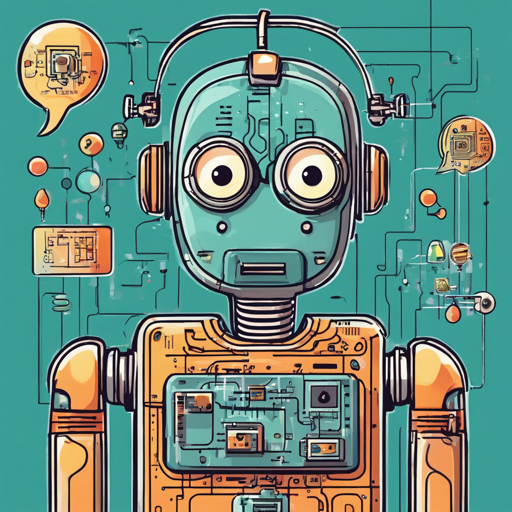In the fabulous world of AI, creating a chatbot that channels the personality of Sheldon Cooper from “The Big Bang Theory” is a tantalizing challenge. With the DialoGPT model at your disposal, you can bring the quirky, logic-driven, and often hilarious character of Sheldon to life. Let’s dive into the steps and approach you’ll need to achieve this feat!
Step 1: Set Up Your Environment
First things first! You need to set up your coding environment. Start by ensuring you have Python installed on your machine along with essential libraries like transformers and torch. You can install these using pip.
pip install transformers torchStep 2: Load DialoGPT
Now it’s time to load the DialoGPT model. This model is like a sponge, soaking up conversational data to generate responses. Think of it as a digital actor preparing for the role of Sheldon Cooper. Here’s how you can load it:
from transformers import AutoModelForCausalLM, AutoTokenizer
model_name = "microsoft/DialoGPT-medium"
tokenizer = AutoTokenizer.from_pretrained(model_name)
model = AutoModelForCausalLM.from_pretrained(model_name)In this analogy, loading the model is like ensuring Sheldon has his favorite spot on the couch before diving into conversations!
Step 3: Create the Chat Loop
The next step is to create an interactive chat loop where users can communicate with their Sheldon-inspired bot. This is similar to a script for an engaging episode of “The Big Bang Theory”. Here’s a snappy way to do it:
chat_history_ids = None
while True:
user_input = input("You: ")
new_user_input_ids = tokenizer.encode(user_input + tokenizer.eos_token, return_tensors='pt')
# Append new user input to the chat history
chat_history_ids = new_user_input_ids if chat_history_ids is None else torch.cat([chat_history_ids, new_user_input_ids], dim=-1)
# Generate a response from the model
bot_input_ids = chat_history_ids[:, -1000:]
response_ids = model.generate(bot_input_ids, max_length=1000, pad_token_id=tokenizer.eos_token_id)
# Get the bot's response text
bot_response = tokenizer.decode(response_ids[:, chat_history_ids.shape[-1]:][0], skip_special_tokens=True)
print("Sheldon: ", bot_response)This loop allows for an ongoing conversation, much like how Sheldon interacts with his friends, where every response builds upon the previous dialogue.
Troubleshooting Tips
While setting up your Sheldon Cooper chatbot can be thrilling, you might encounter some bumps along the way. Here are a few troubleshooting ideas:
- Issue: Model fails to load due to missing dependencies.
Solution: Double-check that all necessary libraries are installed and that you’re using compatible versions. - Issue: Chatbot responses seem irrelevant.
Solution: Ensure that your input data aligns with the kind of conversations you want from the model; try guiding the conversation with Sheldon-specific prompts. - Issue: Model is slow in responding.
Solution: Check your machine’s processing capability; for quicker responses, consider running the model on a cloud service with better resources.
For more insights, updates, or to collaborate on AI development projects, stay connected with fxis.ai.
Conclusion
By following the steps outlined above, you can create a chatbot that captures the essence of Sheldon Cooper. Remember to infuse personality into your interactions; after all, no one wants a Sheldon who only discusses physics! At fxis.ai, we believe that such advancements are crucial for the future of AI, as they enable more comprehensive and effective solutions. Our team is continually exploring new methodologies to push the envelope in artificial intelligence, ensuring that our clients benefit from the latest technological innovations.

